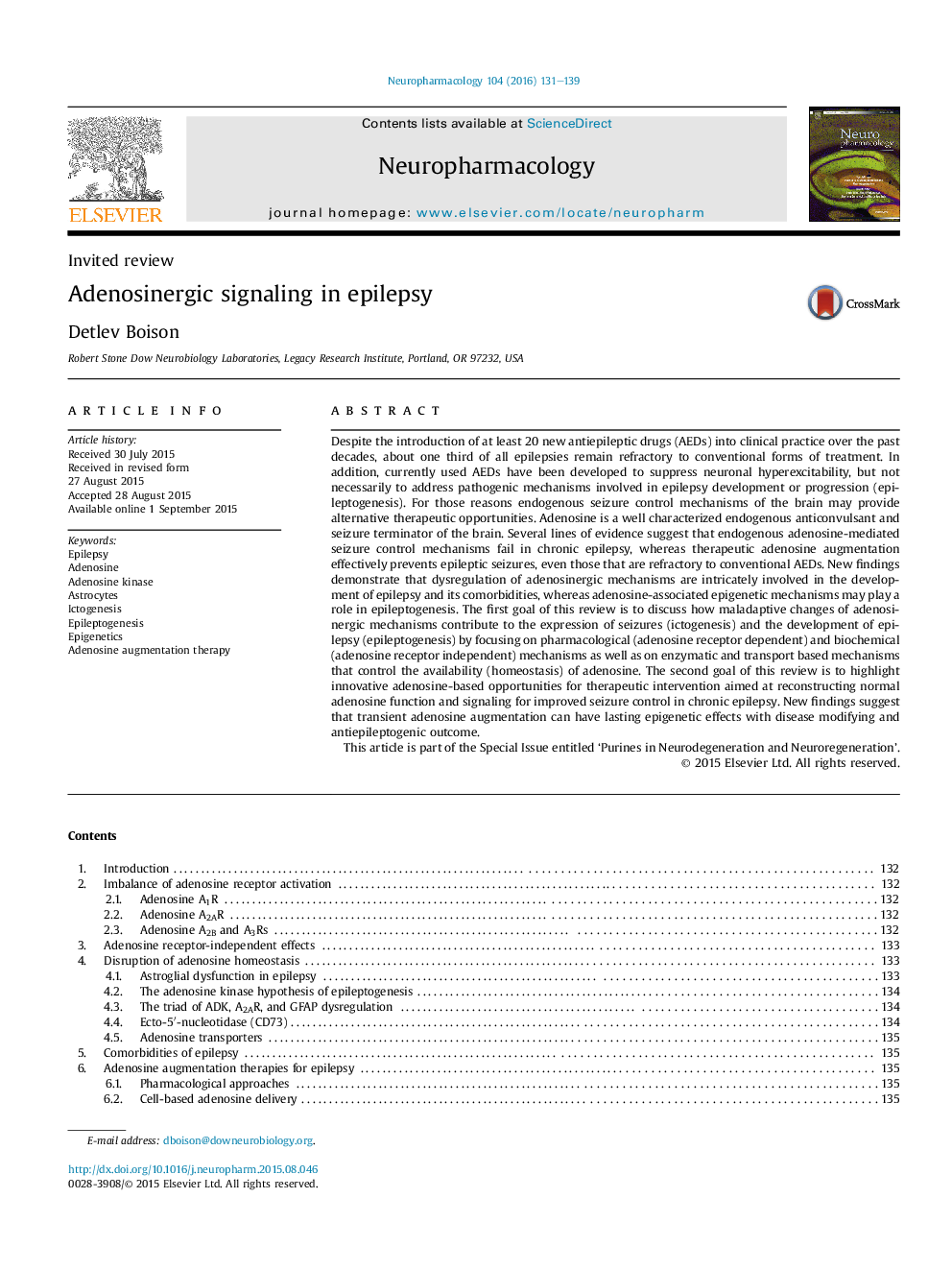| کد مقاله | کد نشریه | سال انتشار | مقاله انگلیسی | نسخه تمام متن |
|---|---|---|---|---|
| 5813589 | 1556611 | 2016 | 9 صفحه PDF | دانلود رایگان |
- Adenosine deficiency is a pathological hallmark of epilepsy.
- Hypermethylation of DNA is associated with the epileptic state.
- Adenosine deficiency causes increased DNA methylation.
- Adenosine therapy effectively suppresses seizures.
- Adenosine therapy restores normal DNA methylation levels & prevents epileptogenesis.
Despite the introduction of at least 20 new antiepileptic drugs (AEDs) into clinical practice over the past decades, about one third of all epilepsies remain refractory to conventional forms of treatment. In addition, currently used AEDs have been developed to suppress neuronal hyperexcitability, but not necessarily to address pathogenic mechanisms involved in epilepsy development or progression (epileptogenesis). For those reasons endogenous seizure control mechanisms of the brain may provide alternative therapeutic opportunities. Adenosine is a well characterized endogenous anticonvulsant and seizure terminator of the brain. Several lines of evidence suggest that endogenous adenosine-mediated seizure control mechanisms fail in chronic epilepsy, whereas therapeutic adenosine augmentation effectively prevents epileptic seizures, even those that are refractory to conventional AEDs. New findings demonstrate that dysregulation of adenosinergic mechanisms are intricately involved in the development of epilepsy and its comorbidities, whereas adenosine-associated epigenetic mechanisms may play a role in epileptogenesis. The first goal of this review is to discuss how maladaptive changes of adenosinergic mechanisms contribute to the expression of seizures (ictogenesis) and the development of epilepsy (epileptogenesis) by focusing on pharmacological (adenosine receptor dependent) and biochemical (adenosine receptor independent) mechanisms as well as on enzymatic and transport based mechanisms that control the availability (homeostasis) of adenosine. The second goal of this review is to highlight innovative adenosine-based opportunities for therapeutic intervention aimed at reconstructing normal adenosine function and signaling for improved seizure control in chronic epilepsy. New findings suggest that transient adenosine augmentation can have lasting epigenetic effects with disease modifying and antiepileptogenic outcome.This article is part of the Special Issue entitled 'Purines in Neurodegeneration and Neuroregeneration'.
245
Journal: Neuropharmacology - Volume 104, May 2016, Pages 131-139
